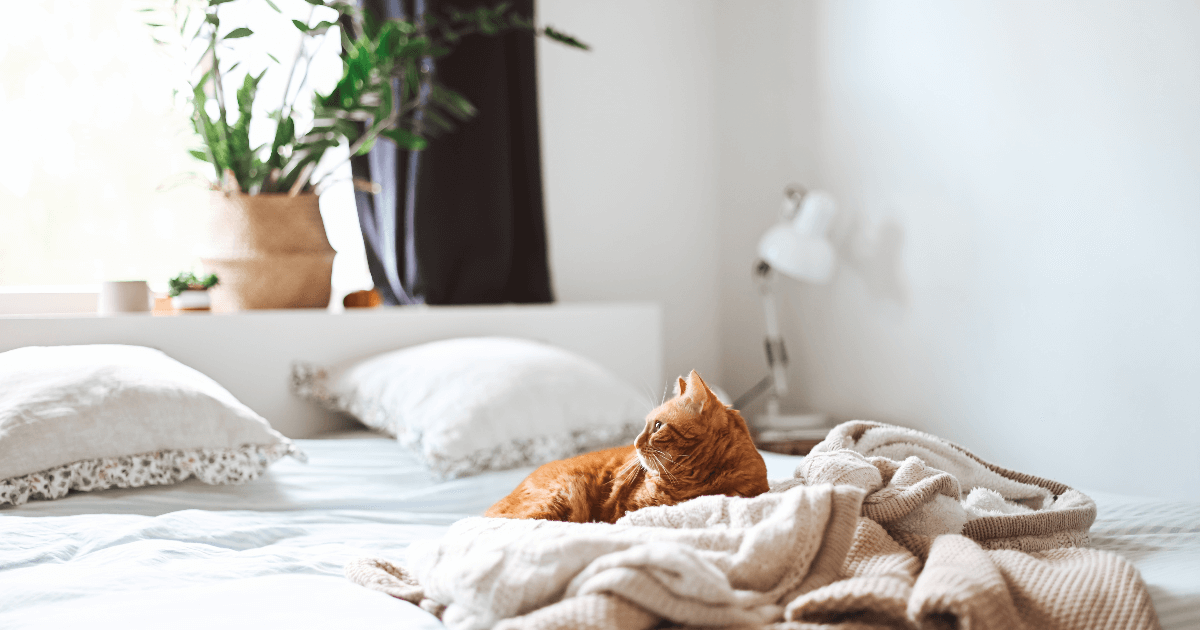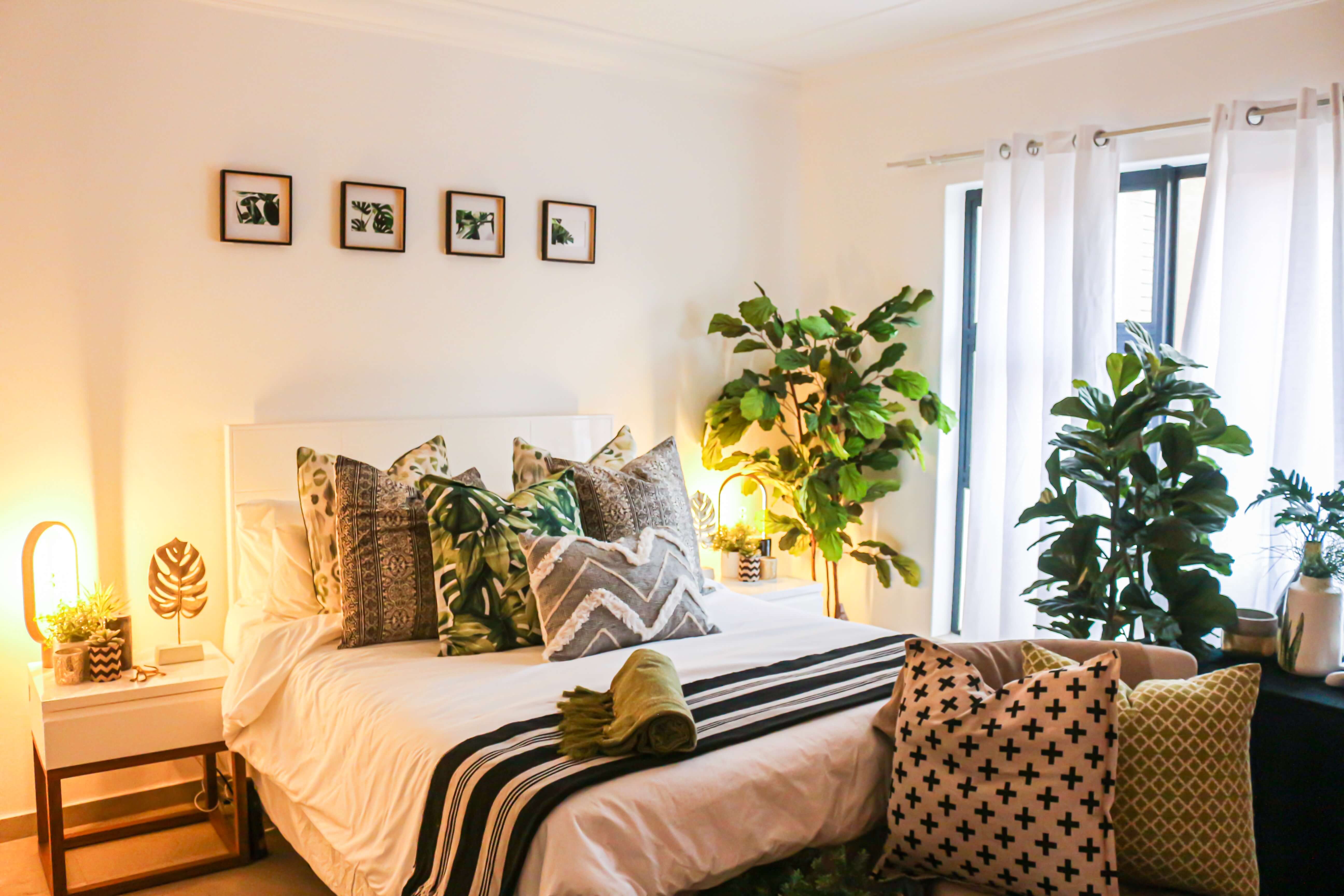

Falls are a well-known and documented danger the senior population faces. There is plenty of awareness around falls — the month of September is National Falls Prevention Month and the National Council on Aging hosts a Falls Prevention Awareness Week each year in September to remind older adults and their loved ones about the importance of creating a safe and fall-free environment.
While many individuals understand the dangers of a fall at home, few are aware of the risk of falling from bed. The issue may be less publicized, but is just as dangerous as other different types of falls.
Bed falls are difficult to isolate. The cause may be the height of the bed or the soft nature of the mattress, which makes it difficult for an older adult to steady and support themselves as they stand up. Another reason bed falls may occur could be because of a condition known as orthostatic hypotension — a form of low blood pressure that can make you feel lightheaded or dizzy when you stand up from lying down or sitting. Regardless of the reason, it’s important to address the dangers of falling from bed and how the risks can be minimized.
Caretakers and loved ones should be aware of the following conditions which may increase a senior’s risk of falling out of bed.

Diabetes is a serious health condition where your body is unable to properly regulate your blood glucose (sugar) level. You may not be able to produce enough insulin, leading to blood sugar levels that are higher than normal. One of the outcomes may be diabetic neuropathy.
According to the Mayo Clinic, “Diabetic neuropathy is a serious diabetes complication that may affect as many as 50% of people with diabetes.” As diabetes and diabetic neuropathy progress, the risk of falling can increase due to cognitive decline, poor body awareness (kinaesthesia), changes to balance and the side effects of diabetes medication.
A recent hospitalization or medical procedure could be the cause of why an older adult would fall out of bed. Safety measures, such as bed rails, are commonly taken in hospitals to keep patients safe, but the danger of falling from bed re-emerges when the patient returns home. Many hospitals do not incorporate fall risk as part of their discharge practices for elderly patients, so provider support may be lacking when they go home after a hospitalization. It’s important for family members and caretakers to be aware of the danger of falling from bed and take preventative measures.
A Brazilian study notes that surgical post-op recovery is a major risk fall factor, “…most indicators of good surgical recovery, such as those related to comfort, physical independence and emotional support, when affected, become important risk factors for falls.” Patients who are in recovery may still be under the influence of anesthesia, using catheters and drains, or have skin issues that will impair their balance.
Some common high-risk medical events that could lead to a fall is a stroke, heart attack or cardiovascular disease. There are 43.7 million adults over 60 that suffer from cardiovascular disease (CVD). Studies show that 60% of patients hospitalized for CVD are at an elevated risk for falling within 180 days of diagnosis.
The medication prescribed to an older adult can potentially cause side effects. Certain prescription drugs could lead to a lack of body awareness and poor coordination that could cause the individual to have trouble getting out of bed — and even fall.
Drug use among the older segment of the population has dramatically increased over the years, with 72% of people 55 years of age or older taking at least one prescription drug. Consequently, adverse drug reactions (ADRs) are more likely to occur, resulting in significant morbidity and mortality. The same study found that two-thirds of all ADR-related hospitalizations occur in adults over the age of 60.
The most common types of drugs that are known to increase fall risk are benzodiazepines, antidepressants, and anticholinergics. Here’s a closer look:
Consult with a doctor to review you or your loved one’s prescriptions and over-the-counter medication use to pinpoint any that may increase the risk of falls.

Making changes to a bedroom can cause disorientation, which could increase the risk of falling out of bed. Some points to watch out for include:
Decreased bladder and bowel control can cause an older adult to rush to the bathroom more recklessly than usual. A sleeping senior may wake up with the urgency to go to the bathroom and may roll over to get up quickly while still being half asleep, causing them to fall out of bed. Paired with the low visibility of a bedroom at night, the likelihood of falling out of bed is increased. It’s advisable to have nightlights plugged in near the bed and have a bedside lamp on the nightstand that can be easily switched on before the older adult tries to get out of bed.
Sundowning is a condition that results in agitation, behavioral problems or difficulty sleeping. It affects individuals with dementia or Alzheimers and begins at dusk as the sun goes down. Sundowning can be dangerous and lead to a fall out of bed. The increase in confusion, fear, disorientation and fatigue in the evening can cause an older adult to fall out of bed as they’re unable to properly and safely settle. They may toss and turn every night, lose their bearings in the bed and roll off. Or they may attempt to get up from bed quickly, get disoriented, and fall.
Benign paroxysmal positional vertigo (BPPV) is an inner-ear condition that causes individuals to experience dizziness and lose their balance easily. Shifting or tilting your head could cause you to feel as if the room is spinning. BPPV is present in roughly 10% of the elderly population — it’s the leading cause of dizziness in older adults. A study found that patients with BPPV had a higher risk of fracture than those without the condition, due to their risk of falling. Shifting positions, such as sitting up in bed or reaching for an item on the nightstand could cause a senior to feel dizzy and fall out of bed. BPPV is highly treatable in most cases, but caretakers watching over older adults with vertigo should remain vigilant.
Worsening eyesight is very common in older adults. The Centers for Disease Control (CDC) claims, “More than 12 million Americans aged 40 years and older experience vision impairment.” Worsening eyesight can make an aging adult more prone to falling. Aging adults normally lie in bed in the evenings and nights, when a bedroom may be darker. Unfortunately, low light levels and worsening eyesight complicate the situation. They may be laying in bed in the dark or in low-light conditions without their glasses on and may not accurately gauge their distance from the edge of the bed, potentially falling off without realizing what has happened.
Rapid eye movement (REM) sleep behavior disorder typically occurs between the ages of 40 to 70 years of age. It’s a condition in which a person physically acts out their vivid dreams. The person may make violent leg and arm movements and scream or shout in their sleep. The lack of conscious control of their limbs could cause them to flail, swing, and fall out of bed. According to the Mayo Clinic, “The onset of REM sleep behavior disorder is often gradual and it can get worse with time. REM sleep behavior disorder may be associated with other neurological conditions, such as Lewy body dementia (also called dementia with Lewy bodies), Parkinson’s disease or multiple system atrophy.“
Now that you have a clear picture of which aging adults are most at risk for bed falls, you can proactively take steps to reduce the risk of injury. Consider the following measures to reduce your senior’s risk of falling out of bed.
Bedroom fall prevention should start with the bed itself. Perform a bed safety audit to determine if the older adult’s mattress presents a fall risk and needs to be replaced. Review the following points:
Firmness and Age of Mattress
Check the age and condition of your loved one’s mattress. An old, overly soft or overly firm mattress may cause a person back pain, discomfort, or movement issues that may cause them to struggle to get out of bed and inadvertently fall. We recommend replacing your mattress every 7 – 10 years, but if the aging adult spends a large amount of time in bed, their mattress may need to be replaced sooner.
Position of Bed
If an older adult is prone to falling out of bed, the bedroom may need to be rearranged to add a layer of safety. Placing the side of the bed against a wall reduces the risk of falling out of bed by half — they will only be able to roll off of one side instead of two. You can oftentimes adjust the bed height so the user may sit on the bed with their feet firmly on the floor and hips just slightly above the knees for safer entry and exit. Consider placing a heavy, sturdy nightstand next to the bed with a lamp that can easily be switched on or off. The nightstand can be used to help the aging adult hold on and support themselves as they stand up or sit down.
Safety tools
Here is a list of safety tools you can buy for your loved one to make their environment a safer space.
If falling out of bed continues to occur, there are many alternatives to a traditional bed setup that can provide a safer experience. Keep in mind, each product mentioned below has its own pros and cons.
Lower Bed Frame
Purchasing and transitioning to a low or super-low bed frame could reduce the risk of severe injury from falling from a higher bed. The one issue with a lower bed frame is the aging adult may have trouble getting in and out of the bed. A bed that’s too low may actually create a new problem — the older adult may fall into the bed while attempting to sit, causing neck and back strains from the jarring drop into the bed. If you choose to go with a lower bed frame option, make sure someone is always nearby to assist the person in and out of bed. A low bedframe can sometimes be a DIY project. Depending on the care needs of the person, a low bedframe can be purchased for a couple of hundred dollars if the user does not need additional medical capabilities from the bed.
Hospital Bed at Home
You may want to replace a traditional mattress and box spring with a hospital bed. The hospital bed style has collapsible side rails that could be locked in place when the person sleeps and dropped down to get out of bed. Hospital beds also have other features, such as electric articulation that raises the upper half of the bed to assist with sitting up, and adjustable heights that can lower or raise to accommodate the person getting in and out of the bed. But while they’re a safer alternative, hospital beds are a major investment. An electric hospital bed, including the mattress, costs anywhere from $1000 to $2500 and up.
Turning Bed
A turning bed does exactly what it sounds like – turns while the person is lying down on it. Let us explain — the goal is to move them into a sitting-on-the-edge-of-the-bed position using a remote control mechanism. This makes it possible for a person lying in the bed to move it into a sitting position that can help them safely slide off the bed.
The bed also has side handles for the individual to hang on to while it moves them and the mattress into a more prime sitting position. Although the concept is sound, turning beds could cost more than $5000.
Posey Bed
Purchasing and transitioning to a Posey bed may be the safest way to ensure the aging adult you care for doesn’t fall out of bed. These beds have fully-enclosed sides that do not allow the user to fall or roll out, and are typically only for extremely serious fall risk cases. Posey beds are typically only available at medical supply stores, and could come with a price tag of $15,000. In addition, some individuals may feel claustrophobic in the enclosure, and or hot and uncomfortable in the summer.
While the fear of falling and related injury is scary, the FDA reports that hundreds of people have died in beds with rails — many of them were older adults.
Please consult with your healthcare provider before making decisions about the use of restraints to prevent bedroom falls. Keep in mind that if your loved one is in a nursing home or receiving home care, there may be legal implications associated with the use of bed rails and other solutions. If you are unsure, ask hospital, nursing, or home care staff what the policy is and how it applies to your loved one.

Put your business in front of thousands of LOCALS! Create your free listing on the NewsSTAND and update your profile anytime to share the latest info, specials, and contact details.

Got a story to Share? Pitch your idea or write an article for the NewsSTAND! Join us in highlighting the positive and powerful moments that make our city shine.

We’re passionate about working together to amplify our City. Reach out to the NewsSTAND team to explore collaboration opportunities and make a difference in our community.
Hover over each card to unlock the full story and see what you’re about to get!







